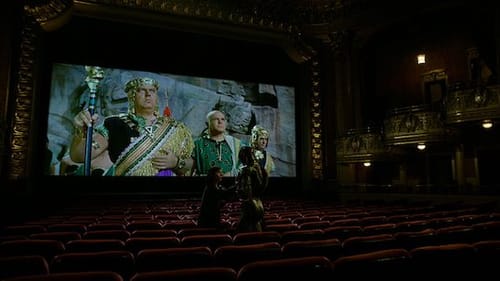Stay in the Loop
BSR publishes on a weekly schedule, with an email newsletter every Wednesday and Thursday morning. There’s no paywall, and subscribing is always free.
The sound of science
Guillermo del Toro's 'The Shape of Water'

Guillermo del Toro has done it again — The Shape of Water offers an incredible mashup of genre and style. While invoking the feeling of a classic monster movie, it also conveys an unconventional love story. So why did the director choose conventional actors for the roles?
At the heart of this tale is the romance between an unnamed amphibious creature (Doug Jones) and Elisa Esposito (Sally Hawkins), who communicates solely in sign language.
Working as a custodian at a secret research facility, Elisa’s only friends are similarly marginalized: Octavia Spencer’s Zelda, a fellow custodian who is unhappy in her marriage; and Richard Jenkins’s Giles, a neighbor and struggling gay artist. After the lab brings in the amphibious man as a new test subject, Elisa feels a sense of kinship in their shared otherness, beginning a friendship that develops into romance.
When Elisa learns the subject will be “terminated,” she and her ragtag group of friends break the creature out of the facility. However, to ensure his lasting freedom, they must prevent Agent Strickland (Michael Shannon) from retrieving him.
Having worked with Del Toro on several past projects (Hellboy, Pan’s Labyrinth) Jones makes a superb creature, and even through his heavily costumed monster suit he delivers one of his finest performances. Really, all of the actors were terrific; no wonder half of them were nominated for Academy Awards (Hawkins, Jenkins, Spencer).
Casting against type
That is why I am almost reluctant to write this next sentence: is it a problem to cast Hawkins in this role when she is neither deaf nor fluent in American Sign Language? More important, does casting a hearing person in one of the few roles that could have gone to a person with hearing impairment deserve the same ire as whitewashing?
It’s true Del Toro wrote the script with Hawkins in mind for Elisa, and this is absolutely a breakthrough role for an actress who, until now, was relatively unknown. Yet, in the same way that there are few leading roles for people of color in mainstream cinema, this was probably the best chance in a long while for an actual deaf actor to be cast in a Hollywood movie.
Hawkins obviously spent time learning ASL and trying to honor the realism of a person who lacks the ability to speak. But an actress who lives with this disability might have avoided some of the stereotypes the film unwittingly delivers.

Throughout the courtship between Elisa and the amphibious man, she sees her disability as a defect and barrier to happiness. At one point, she even dreams a production number during which she sings. On the surface, this doesn’t seem particularly out of character given her interest in classic movies, but it reinforces the notion that people with disabilities are broken and need fixing.
Ultimately, the only way Elisa is shown to be happy is by leaving the world of humans. She will never be accepted for what she is and thus can only be loved by a monster.
Breaking the mold
In Hollywood cinema, people with disabilities typically exist as something to be pitied. They are given a generic arc that involves a fantasy of “getting better” or achieving “normalcy.” Who knows if having an actress with a hearing/speech disability play Elisa would change matters, given that she would likely lack the agency to change Del Toro’s vision?
Yet minority-led casts have forced filmmakers to adopt a more nuanced approach toward race. Wouldn’t it follow that working with a deaf actress might result in a less trope-laden depiction that at least acknowledges its role in furthering stereotypes?
In spite of the issues raised here, I did appreciate the film. Del Toro is an auteur, and this work contains all the idiosyncrasies of his other masterpieces. In both concept and execution, The Shape of Water comes across as a labor of love whose creators have a profound understanding of classic cinema and particularly monster movies.
It was a tremendous risk to write a leading role for a woman who could only communicate through ASL. At least this film shows it is possible to create a successful movie with a key performance in sign language.
What, When, Where
The Shape of Water. Guillermo del Toro directed; screenplay by Guillermo del Toro and Vanessa Taylor. Philadelphia-area showtimes.
Sign up for our newsletter
All of the week's new articles, all in one place. Sign up for the free weekly BSR newsletters, and don't miss a conversation.
 Rob Buscher
Rob Buscher